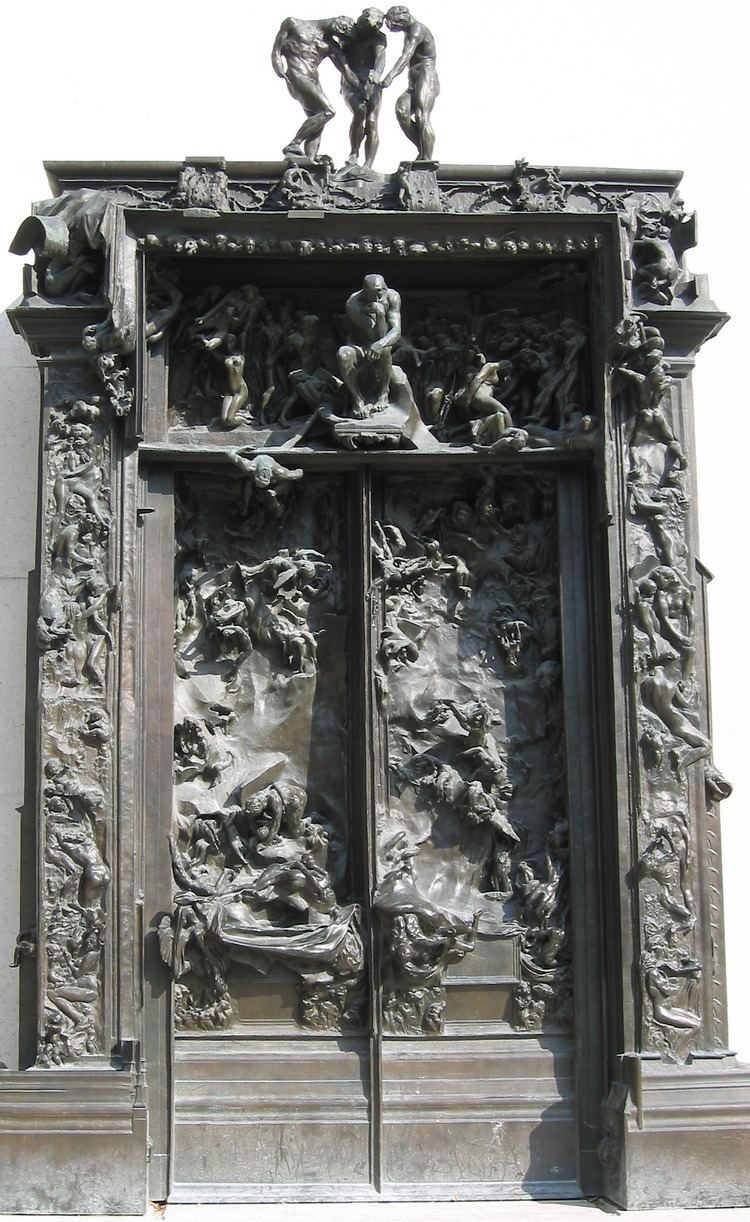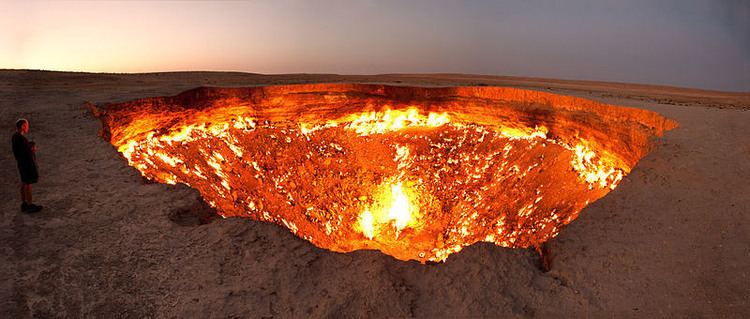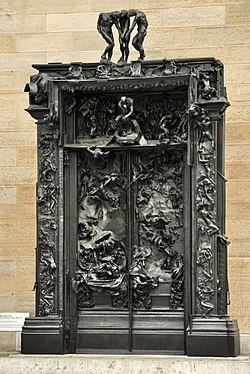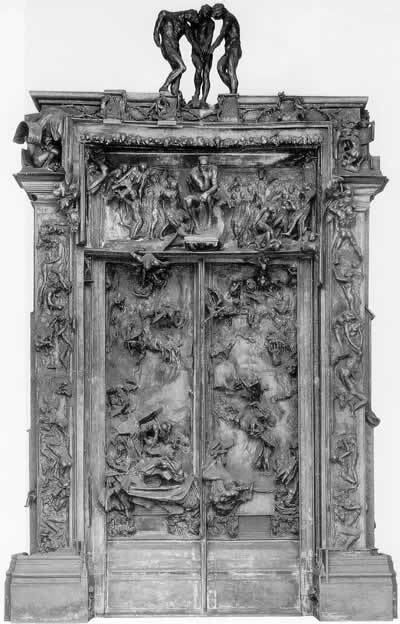Subject Hell Media Plaster, Bronze | Dimensions 6 m x 4 m x 1 m Created 1880–1917 | |
 | ||
Periods Impressionism, Modern art, Symbolism Similar Auguste Rodin artwork, Artwork at Musée d'Orsay, Impressionist artwork | ||
Rodin sculpture garden paris the thinker and the gates of hell
The Gates of Hell (French: La Porte de l'Enfer) is a monumental sculptural group work by French artist Auguste Rodin that depicts a scene from "The Inferno", the first section of Dante Alighieri's Divine Comedy. It stands at 6 metres high, 4 metres wide and 1 metre deep (19.7×13.1×3.3 ft) and contains 180 figures. The figures range from 15 centimetres (6 in) high up to more than one metre (3 ft). Several of the figures were also cast independently by Rodin.
Contents
- Rodin sculpture garden paris the thinker and the gates of hell
- Rodin the gates of hell
- History
- Inspiration for The Gates of Hell
- Outstanding figures
- Locations
- References

Rodin the gates of hell
History

The sculpture was commissioned by the Directorate of Fine Arts in 1880 and was meant to be delivered in 1885. Rodin would continue to work on and off on this project for 37 years, until his death in 1917.

The Directorate asked for an inviting entrance to a planned Decorative Arts Museum with the theme being left to Rodin's selection. Even before this commission, Rodin had developed sketches of some of Dante's characters based on his admiration of Dante's Inferno.

The Decorative Arts Museum was never built. Rodin worked on this project on the ground floor of the Hôtel Biron. Near the end of his life, Rodin donated sculptures, drawings and reproduction rights to the French government. In 1919, two years after his death, The Hôtel Biron became the Musée Rodin housing a cast of The Gates of Hell and related works.
Inspiration for The Gates of Hell

A work of the scope of The Gates of Hell had not been attempted before, but inspiration came from Lorenzo Ghiberti's Gates of Paradise at the Baptistery of St. John, Florence; the 15th century bronze doors depict figures from the Old Testament. Another source of inspiration was medieval cathedrals; some of those combine both high and low relief. Rodin was also inspired by Michelangelo's fresco The Last Judgment, Delacroix's painting The Barque of Dante, Balzac's collection La Comédie humaine and Baudelaire's poems Les Fleurs du mal.

In an article by Serge Basset printed in Le Matin in 1890, Rodin said: "For a whole year I lived with Dante, with him alone, drawing the circles of his inferno. At the end of this year, I realized that while my drawing rendered my vision of Dante, they had become too remote from reality. So I started all over again, working from nature, with my models."
Outstanding figures
The original sculptures were enlarged and became works of art of their own.
Locations
The plaster original was restored in 1917 and is displayed at the Musée d'Orsay in Paris. A series of plaster casts illustrating the development of the work is on view at the Musée Rodin in Meudon. Also in 1917, a model was used to make the original three bronze casts:
Subsequent bronzes have been distributed by the Musée Rodin to a number of locations, including:
